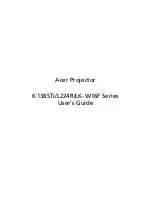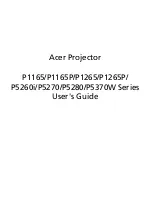
7-17
Chapter 7. Recovering the Computer
A4 Verify whether the AP is operating properly.
When the AP is not operating normally, turn off the AP and after a short while
turn it on again.
Verify whether the AP’s firmware is the most recent version. (Contact the AP
manufacturer or the place where you purchased the AP for details of the AP
firmware.)
A5 Verify whether the AP has been properly connected to the network.
Verify whether the network is operating normally by connecting the wired net-
work cable, which has been connected to the AP, to your computer.
A6 Check the network key settings (encryption key).
When automatic code conversion (a passphrase function) has been selected and
data communication is not functioning even with a normal wireless connection, it
is recommended entering the network key (encryption key) manually.
A7 Check the AP settings as follows. (The following is recommended for a standard
environment and thus may differ according to the specific wireless network envi-
ronment.)
When several APs are present simultaneously, check the channel setting for
each AP. When different APs are using nearby channels, interference may
occur between electronic waves. Set the APs’ channels further apart from each
other. (Ex: Ch1, Ch5, Ch9, Ch13)
When an AP’s SSID (Service Set ID) option is set to “Hide”, you cannot search
for that AP on the computer. We recommend canceling the “Hide” option for
an AP. The SSID is a name for distinguishing one wireless LAN from another
wireless LAN.
It is recommended using Long Preamble. Preamble is a signal for data trans-
mission synchronization. Short Preamble may be supported by some types of
APs but may cause compatibility problems.
It is recommended using a static IP.
Since static channel selection is more reliable than auto channel selection, it is
recommended setting a static channel.
Summary of Contents for NX30
Page 179: ...1 22 Manual ...
Page 201: ...3 14 Manual ...
Page 233: ...4 32 Manual ...
Page 255: ...6 12 Manual ...
Page 283: ...7 28 Manual ...
















































